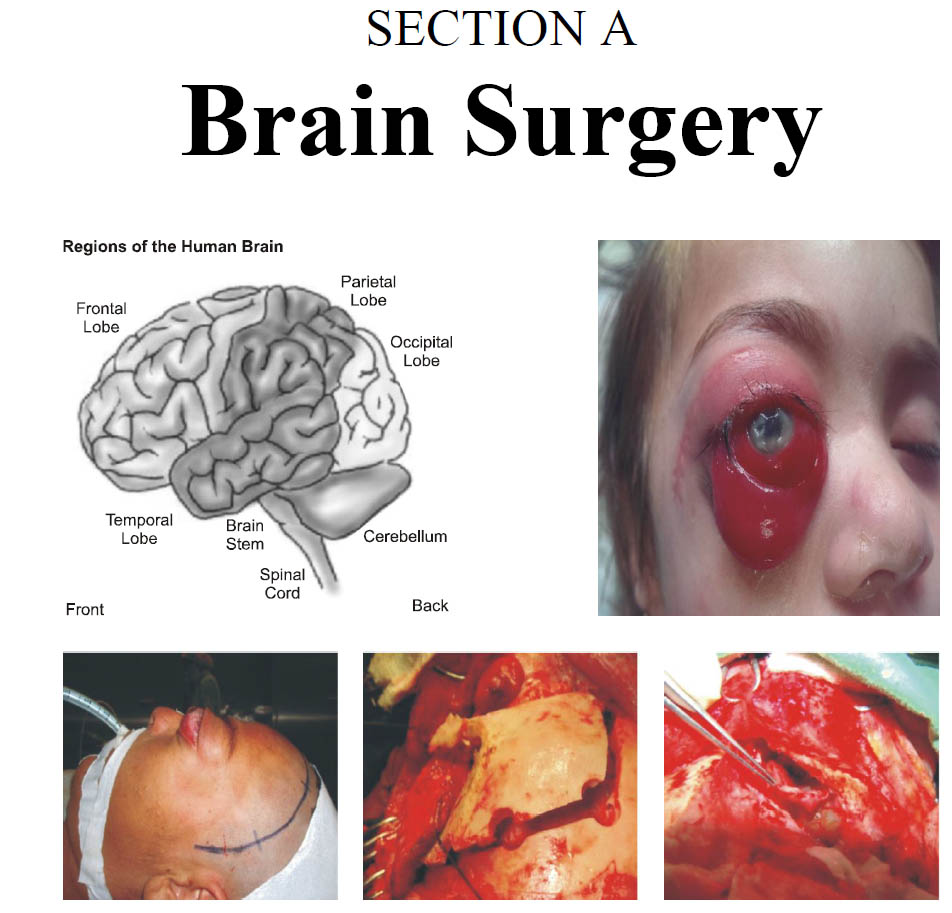Comparison of Stereotactic Subthalamotomy and Ventralis Intermedius (VIM) Thalamotomy in Relieving Parkinsonian Tremor
DOI:
https://doi.org/10.36552/pjns.v24i3.464Keywords:
Parkinson’s disease, Subthalamotomy, VIM Thalamotomy, Unified Parkinson’s disease Rating ScoreAbstract
Background/Objectives: Parkinson’s disease is a neurodegenerative disease with cardinal features of tremor, rigidity, postural instability and bradykinesia. Surgery is indicated for the patients not responding to medical management or who develop motor fluctuations and dyskinesia following prolonged levodopa therapy. Stereotactic Subthalamotomy and VIM (Ventralis Intermedius) Thalamotomy is cheap, safe and effective surgical options for the treatment of Parkinsonian tremor. The objective of the study was to compare Stereotactic Subthalamotomy with Ventralis Intermedius (VIM) Thalamotomy, in terms of improvement in Unified Parkinson’s Disease Rating Scale (UPDRS), for the treatment of Parkinsonian tremor.
Material and Methods: This is a randomized control trial (RCT) and 38 tremor predominant Parkinsonian patients were enrolled in the study. Half of the patients underwent Stereotactic Subthalamotomy and another half underwent VIM Thalamotomy. Patients were assessed pre-operatively, immediately post-operatively and followed up at three weeks, six weeks and three months by using UPDRS scores.
Results: The mean age of patients was 59.58 years and they were predominantly male. Post-operative UPDRS score was improved significantly in both STN and VIM groups. However, the improvement was significantly higher in STN lesioning compared to VIM lesioning.On the other hand, the improvement in tremor component score of UPDRS was comparable in the both groups. Moreover, post-operative complications were higher following Subthalamotomy (21.05%) which included dyskinesia, dysphasia, transient weakness and hematoma formation.
Conclusion: Both Stereotactic Subthalamotomy and VIM Thalamotomy are equally effective in relieving Parkinsonian tremor with a lower complication rate following VIM Thalamotomy.
References
2. Twelves D, Perkins KS, Counsell C. Systematic review of incidence studies of Parkinson’s disease. Mov Disord. 2003; 18: 19–31.
3. Rodriguez-Oroz MC, Jahanshahi M, Krack P, Litvan I, Macias R, Bezard E, Obeso JA. Initial clinical manifestations of Parkinson’s disease: features and pathophysiological mechanisms. Lancet Neurol. 2009; 8: 1128–1139.
4. Rodrigues e Silva AM, Geldsetzer F, Holdorff B, Kielhorn FW, Balzer-Geldsetzer M, Oertel WH, Hurtig H, Dodel R. Who was the man who discovered the “Lewy bodies”? Mov Disord. 2010; 25: 1765–1773.
5. Wirdefeldt K, Adami HO, Cole P, Trichopolous D and Mandel J. Epidemiology and Etiology of Parkinson disease: a review of the evidence. Eur J Epidemio. 2011; 26 (1): 51-58.
6. Mazzucchi S., Frosini D., Bonuccelli U., Ceravolo R. Current treatment and future prospects of dopa-induced dyskinesias. Drugs Today (Barc). 2015; 51 (5): 315-329.
7. Sobstyl M, Zabek M, Koziara H, Kadzio?ka B, Mossakowski Z. Unilateral thalamotomy for the treatment of tremor dominant Parkinson’s disease. Neurol Neurochir Pol. 2006; 40 (2): 119-126.
8. Van Den Eeden SK, Tanner CM, Bernstein AL, Fross RD, Leimpeter A, Bloch DA, Nelson LM. Incidence of Parkinson's disease: variation by age, gender, and race/ ethnicity. Am J Epidemiol. 2003; 157 (11): 1015-1022.
9. Lee A, Gilbert RM. Epidemiology of Parkinson Disease. Neurol Clin. 2016; 34 (4): 955-965.
10. Fraix V, Pollak P, Moro E, Chabardes S, Xie J, Ardouin C, Benabid AL. Subthalamic nucleus stimulation in tremor dominant Parkinsonian patients with previous thalamic surgery. J Neurol Neurosurg Psychiatry, 2005; 76: 246–248.
11. Alvarez L, Macias R, Pavón N, López G, Rodríguez-Oroz MC, Rodríguez R, Alvarez M, Pedroso I, Teijeiro J, Fernández R, Casabona E, Salazar S, Maragoto C, Carballo M, García I, Guridi J, Juncos JL, DeLong MR, Obeso JA. Therapeutic efficacy of unilateral Subthalamotomy in Parkinson's disease: results in 89 patients followed for up to 36 months. J Neurol Neurosurg Psychiatry, 2009; 80 (9): 979-985.
12. Olanow CW, Watts RL, Koller WC. An algorithm (decision tree) for the management of Parkinson's disease (2001): treatment guidelines. Neurology, 2001; 56: S1.
13. Boecker H, Wills AJ, Ceballos-Baumann A, Samuel M, Thomas DG, Marsden CD, Brooks DJ. Stereotactic thalamotomy in tremor-dominant Parkinson's disease: an H2 (15) O PET motor activation study. Ann Neurol. 1997; 41 (1): 108-111.
14. Tarsy D. Does subthalamotomy have a place in the treatment of Parkinson's disease? J Neurol Neurosurg Psychiatry, 2009; 80: 939.
15. Patel NK, Heywood P, O'Sullivan K, McCarter R, Love S, Gill SS. Unilateral subthalamotomy in the treatment of Parkinson's disease. Brain, 2003; 126: 1136–1145.
16. Su PC, Tseng HM, Liu HM, Yen RF, Liou HH. Subthalamotomy for advanced Parkinson disease. J Neurosurg. 2002; 97: 598–606.
17. Chao Y, Gang L, Na ZL, Ming WY, Zhong WS, Mian WS. Surgical Management of Parkinson's disease: Update and Review. Interv Neuroradiol. 2007; 13 (4): 359–368.
18. Jankovic J, Cardoso F, Grossman RG, Hamilton WJ. Outcome after stereotactic thalamotomy for Parkinsonian, essential and other types of tremor. Neurosurgery, 1995; 37 (4): 680-687.
19. Balás I. et al. Stereotactic Thalamotomy for Parkinsonian and others types of tremor: Experiences of thalamic multiunit burst activity by means of semi-microelectrode. Rev Neurol. 2001; 32(16): 520-524.
20. Parihar R, Alterman R, Papavassiliou E, Tarsy D, Shih LC. Comparison of VIM and STN DBS for Parkinsonian Resting and Postural/Action Tremor. Tremor Other Hyperkinet Mov (N Y). 2015; 5: 321.
21. S. Hägele-Link, N.A. Wegener, S.R. Schreglmann, J. Rosenfeld, M. Mueller-Baumberger, R. Bauer, A. Lebeda, B. Werner, E. Martin, G. Kägi. Transcranial unilateral MR guided high intensity focused ultrasound in Parkinson’s disease or essential tremor seems to be save concerning dysphagia and dysarthria. Mov Disord. 2016: 31.

Downloads
Published
Issue
Section
License
The work published by PJNS is licensed under a Creative Commons Attribution-NonCommercial 4.0 International (CC BY-NC 4.0). Copyrights on any open access article published by Pakistan Journal of Neurological Surgery are retained by the author(s).












